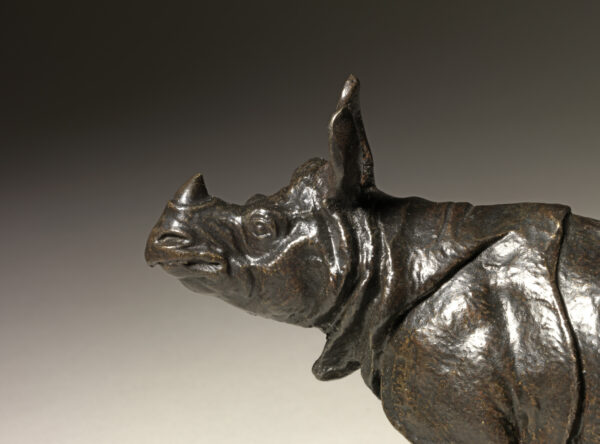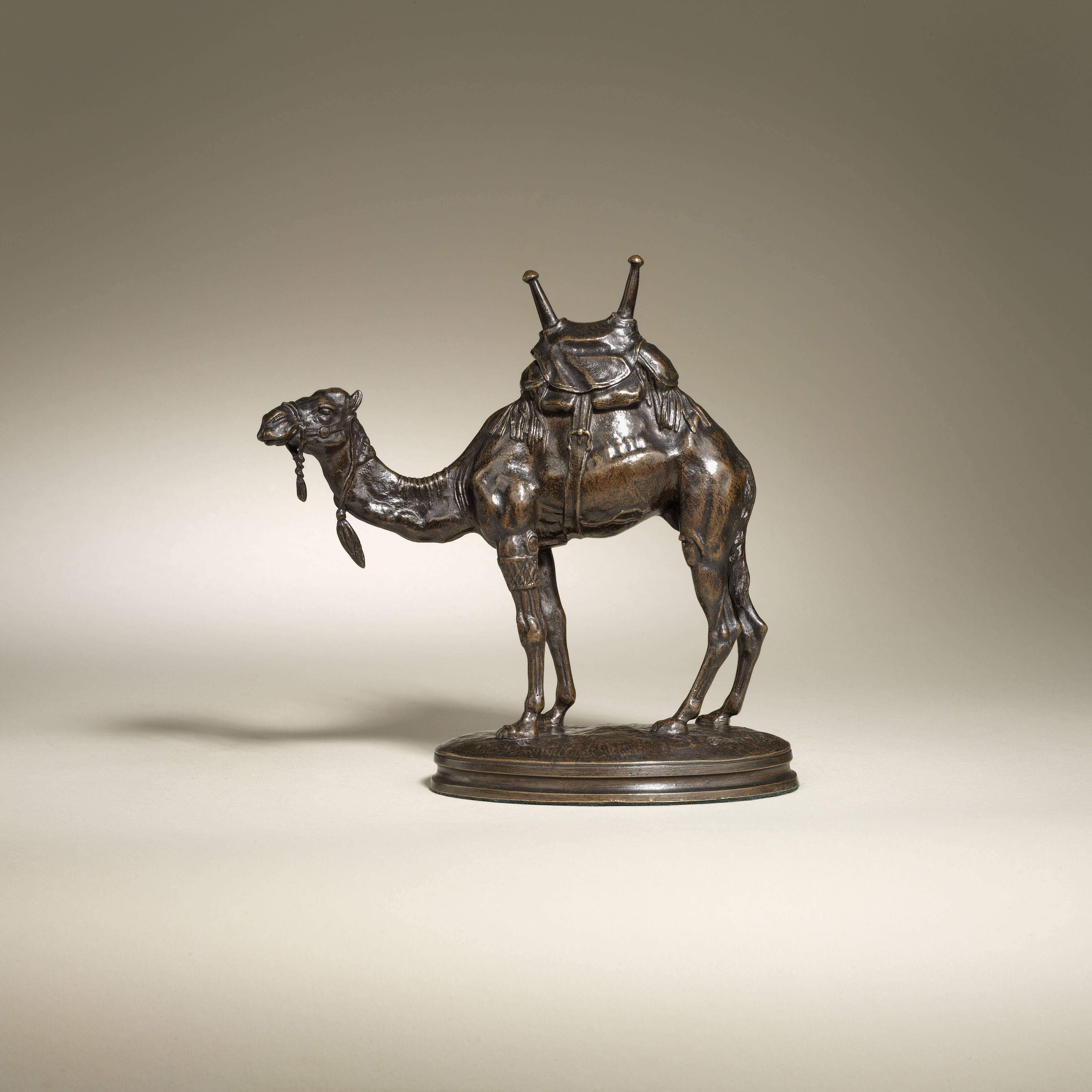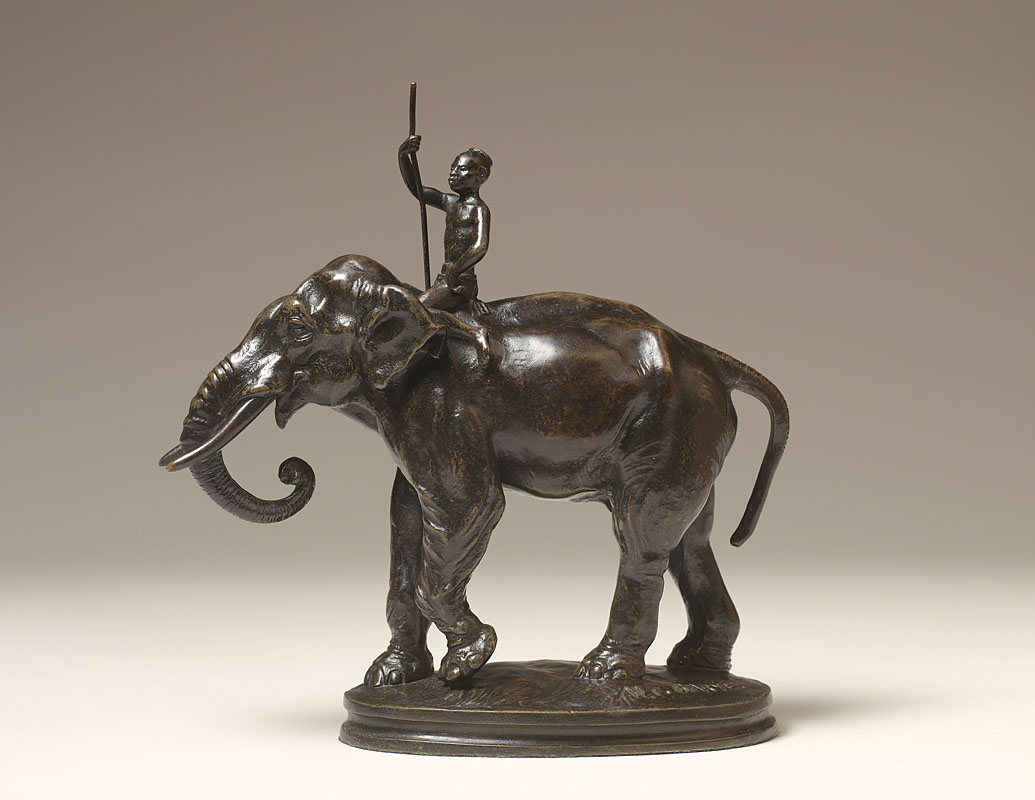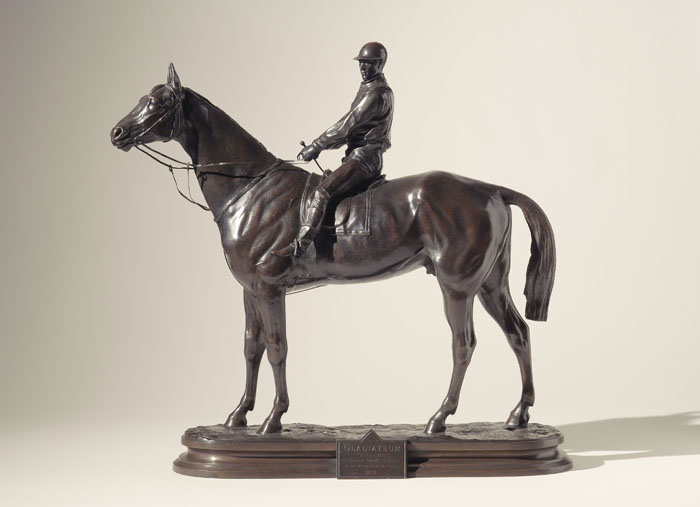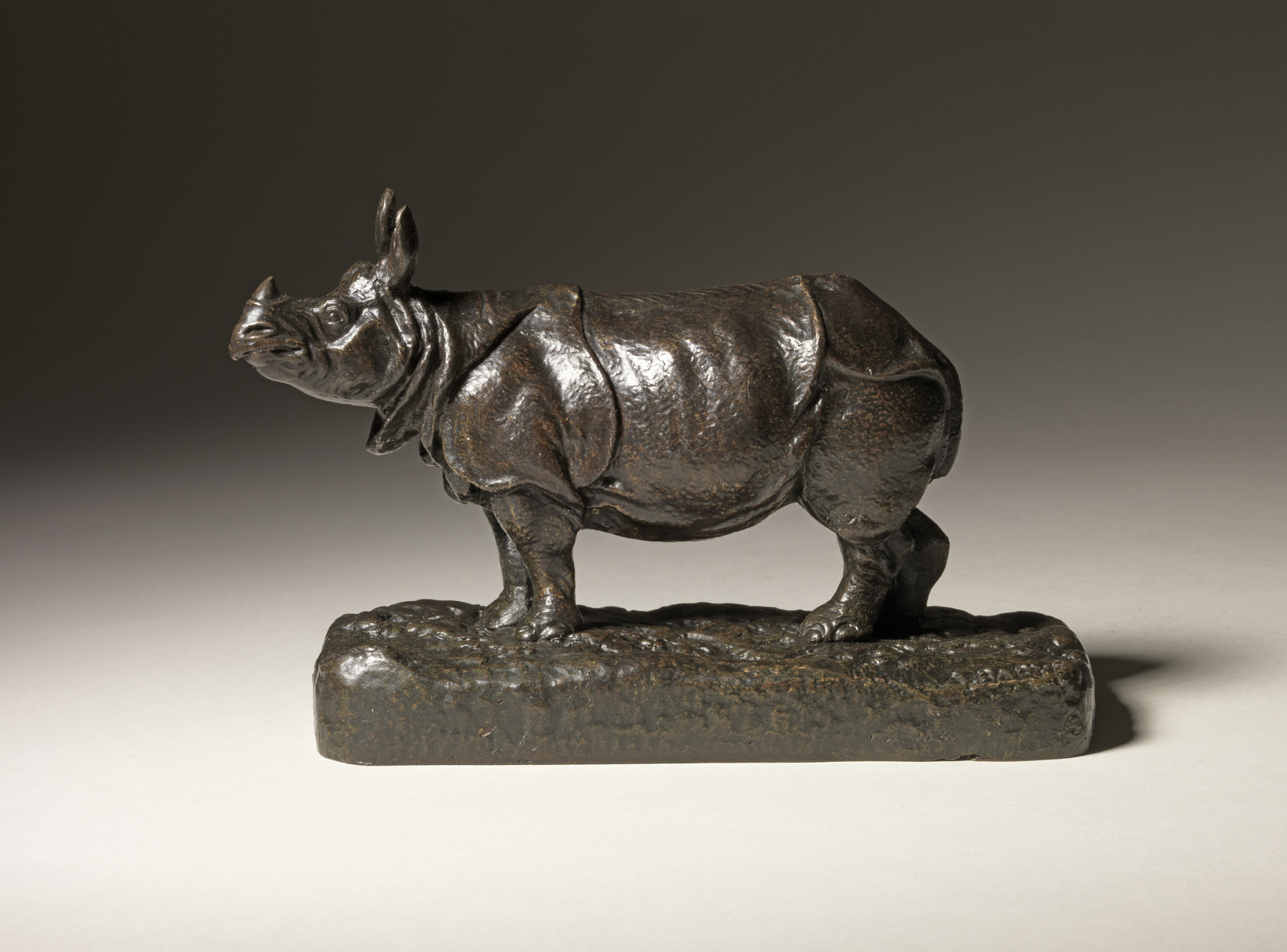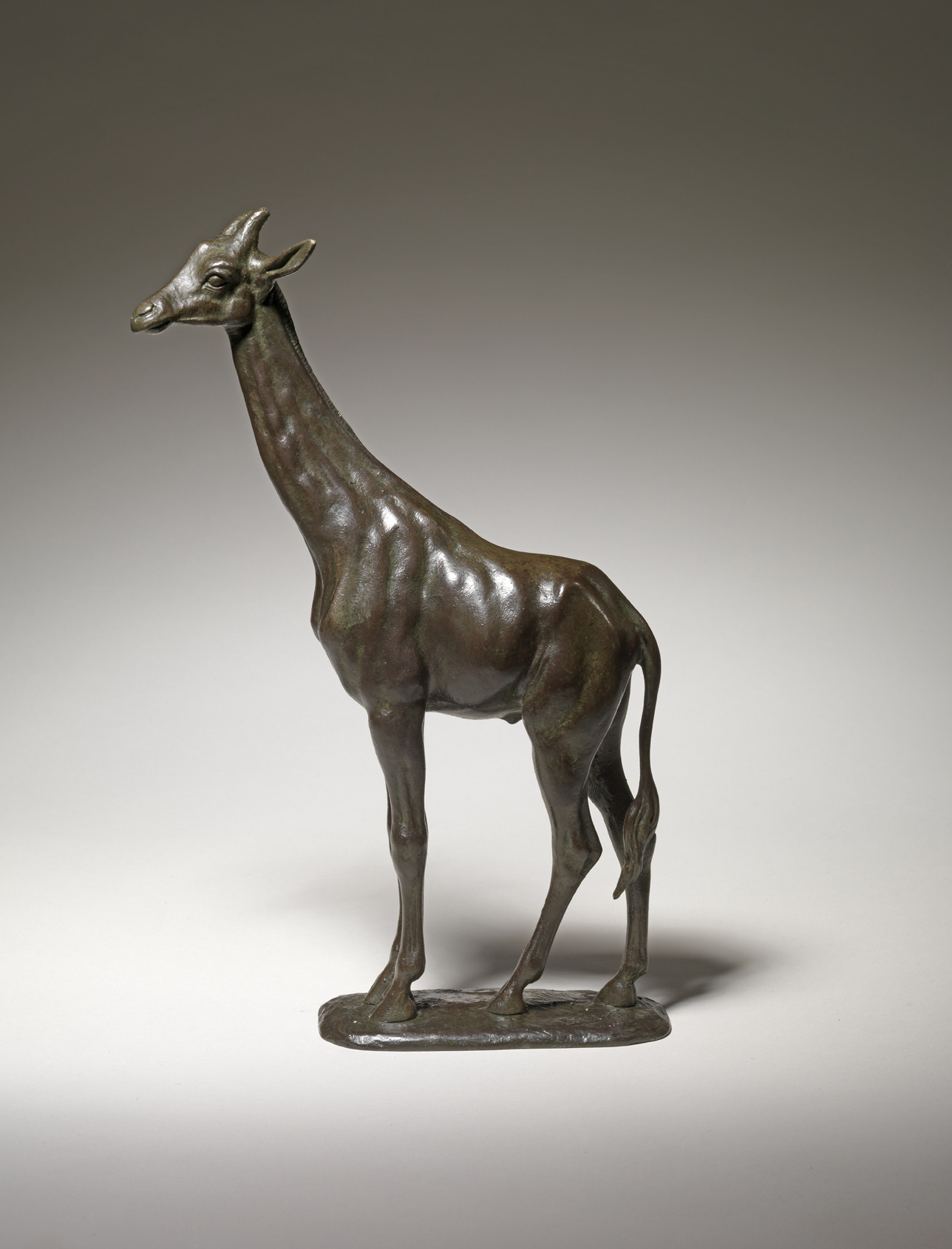His sculptures have a deceptive simplicity. He produced some fine figurative work, but like his father, he is chiefly known as an Animalier.
Alfred Barye was the son of the great Animalier master Antoine-Louis Barye and studied with his father both modelling and casting in his atelier. Much of his work bears the influence of his father’s oeuvre, under whose tutelage he first began to sculpt. Early in his career he was known to specialise in racehorses, but his oeuvre soon expanded to include a wide variety of animals.
Alfred’s output in bronze was not high and casts of his work are extremely rare on the market today.
Alfred Barye was born in Paris in 1839, the son of the great Animalier master Antoine-Louis Barye, under whose tutelage he first began to sculpt. From 1864, his pieces were exhibited at the Salon, and during this early period he was known to specialise in racehorses, but his oeuvre soon expanded to include a wide variety of animal subjects. He is known also to have produced some fine figurative work, and like his father, he is chiefly known as an Animalier, although he also produced several oriental subjects.
His sculptures have a deceptive simplicity, demonstrated in works such as Rhinoceros, Camel and Elephant, as well as more domestic pieces such as Spaniel and Doll. Barye’s final submission to the salon was in 1882 and he died in Paris in the same year. In 1897, he received an honourable mention for the work Aide Fauconnier Indien, Retour de Chasse à la Gazelle.
